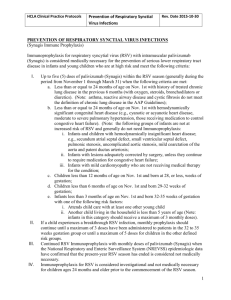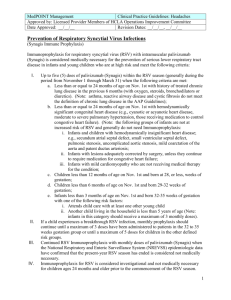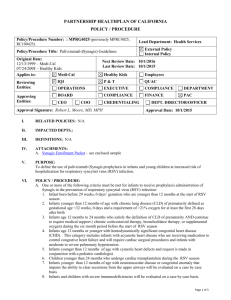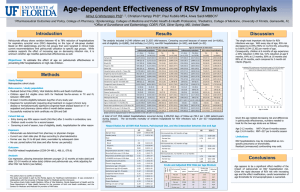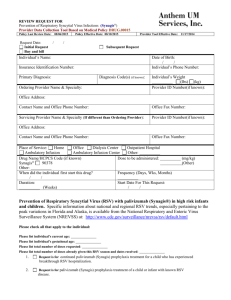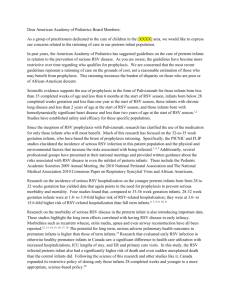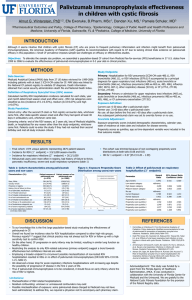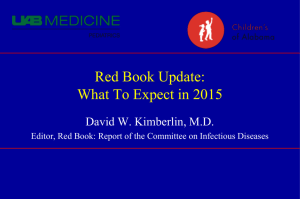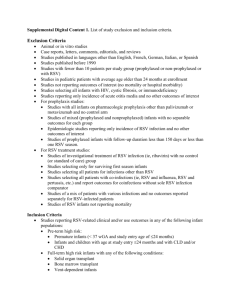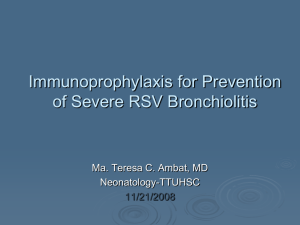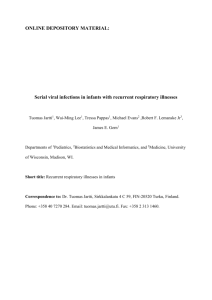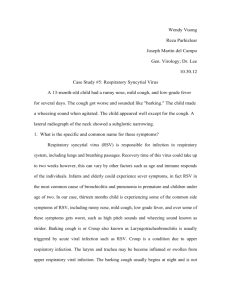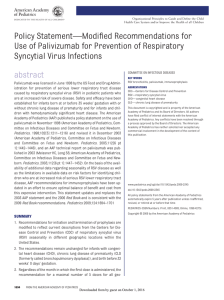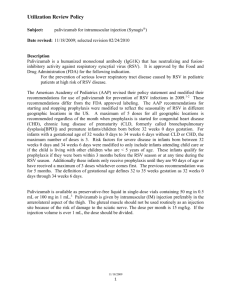Does Synagis® (palivizumab) - Stony Brook University School of
advertisement
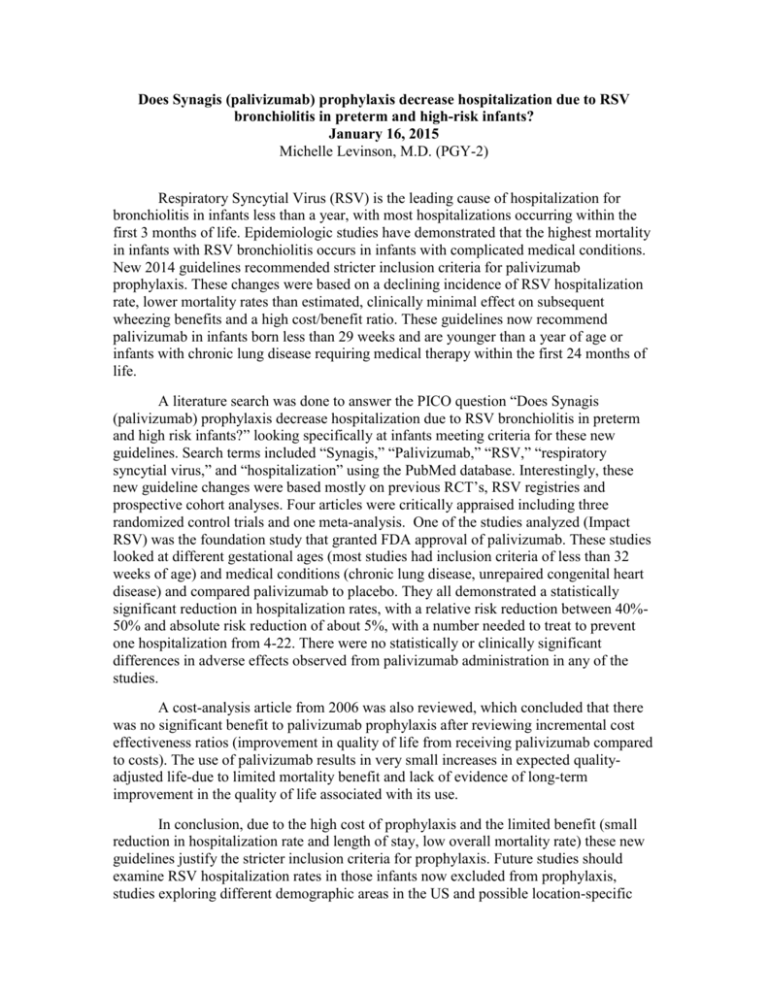
Does Synagis (palivizumab) prophylaxis decrease hospitalization due to RSV bronchiolitis in preterm and high-risk infants? January 16, 2015 Michelle Levinson, M.D. (PGY-2) Respiratory Syncytial Virus (RSV) is the leading cause of hospitalization for bronchiolitis in infants less than a year, with most hospitalizations occurring within the first 3 months of life. Epidemiologic studies have demonstrated that the highest mortality in infants with RSV bronchiolitis occurs in infants with complicated medical conditions. New 2014 guidelines recommended stricter inclusion criteria for palivizumab prophylaxis. These changes were based on a declining incidence of RSV hospitalization rate, lower mortality rates than estimated, clinically minimal effect on subsequent wheezing benefits and a high cost/benefit ratio. These guidelines now recommend palivizumab in infants born less than 29 weeks and are younger than a year of age or infants with chronic lung disease requiring medical therapy within the first 24 months of life. A literature search was done to answer the PICO question “Does Synagis (palivizumab) prophylaxis decrease hospitalization due to RSV bronchiolitis in preterm and high risk infants?” looking specifically at infants meeting criteria for these new guidelines. Search terms included “Synagis,” “Palivizumab,” “RSV,” “respiratory syncytial virus,” and “hospitalization” using the PubMed database. Interestingly, these new guideline changes were based mostly on previous RCT’s, RSV registries and prospective cohort analyses. Four articles were critically appraised including three randomized control trials and one meta-analysis. One of the studies analyzed (Impact RSV) was the foundation study that granted FDA approval of palivizumab. These studies looked at different gestational ages (most studies had inclusion criteria of less than 32 weeks of age) and medical conditions (chronic lung disease, unrepaired congenital heart disease) and compared palivizumab to placebo. They all demonstrated a statistically significant reduction in hospitalization rates, with a relative risk reduction between 40%50% and absolute risk reduction of about 5%, with a number needed to treat to prevent one hospitalization from 4-22. There were no statistically or clinically significant differences in adverse effects observed from palivizumab administration in any of the studies. A cost-analysis article from 2006 was also reviewed, which concluded that there was no significant benefit to palivizumab prophylaxis after reviewing incremental cost effectiveness ratios (improvement in quality of life from receiving palivizumab compared to costs). The use of palivizumab results in very small increases in expected qualityadjusted life-due to limited mortality benefit and lack of evidence of long-term improvement in the quality of life associated with its use. In conclusion, due to the high cost of prophylaxis and the limited benefit (small reduction in hospitalization rate and length of stay, low overall mortality rate) these new guidelines justify the stricter inclusion criteria for prophylaxis. Future studies should examine RSV hospitalization rates in those infants now excluded from prophylaxis, studies exploring different demographic areas in the US and possible location-specific guidelines, and re-evaluation of cost-effectiveness once the drug is off patent. References 1. “Palivizumab, a Humanized Respiratory Syncitial Virus Monoclonal Antibody, Reduces Hospitalization From Respiratory Syncitial Virus Infection in High-risk Infants,” Pediatrics 1998;102 (3);531-7 2. Wegzyn C. et al. “Safety and Effectiveness of in Children at High Risk of Serious Disease Due to Respiratory Syncytial Virus Infection: A Systematic Review.” Infectious Disease Therapy. 2014; 3(2): 133–158 3. “Palivizumab prophylaxis: does it have any influence on the growth and development of the infants?” American Journal of Perinatology 2014; (8):667-72 4. “Palivizumab prophylaxis reduces hospitalization due to respiratory syncytial virus in young children with hemodynamically significant congenital heart disease.” Journal of Pediatrics 2003; 143(4);532-40 5. “Cost-effectiveness analysis of palivizumab in premature infants without chronic lung disease.” Archives of Pediatric and Adolescent Medicine 2006; 160(10):1070-6
